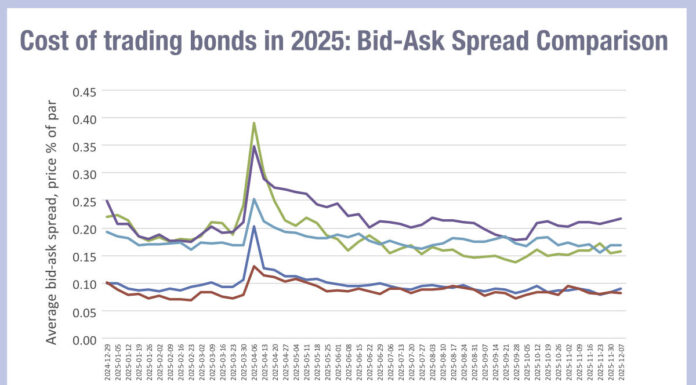
Louis Gargour, chief investment officer at LNG Capital gave this late-cycle warning at a FILS panel dedicated to alternative investment in private credit. He echoed what Jamie Dimon said at JP Morgan’s latest earnings release talking about bad credit: “If you see one cockroach there is lots more around”.
Gargour framed the risk in credit quality terms and expected risk adjusted returns: “Risk-free” treasuries are still adjusting to the new fiscal dominance paradigms; investment grade spreads are very tight to Treasuries; high yield spreads expansive, or tight to investment grade and private credit is “very tight” to high yield, leaving little room for error in origination and due diligence if growth or employment rolls over. Against that backdrop, he said illiquidity inherent in private credits must pay investors for it.
Looking at pricing, he said: “If the spread over comparable public debt is below 1.5%, you’re paying too much; around 3% more and you’re being paid properly.”
Justin Matthews, head of fixed income at GIB Capital, a Saudi Arabia based asset manager with US$3.2 bn under management offered a more positive view: allocators are likely to keep increasing exposures because private markets can dampen behavioural mistakes when public valuations feel stretched as they are not marked to market.
He said: “People, in their hunt for better risk-adjusted long-term returns, are very likely to adopt this asset class into their portfolios… if you want to sleep well at night… having higher allocation to private markets helps when public market valuations are stretched.”
The third participant on the panel, Filippo Bondurri, founder at SGMC cautioned that private credit’s real-world stress test lies ahead, and that some of the selling points are regime dependent. For him, investors still need to see how both investment and legal outcomes play out in a downturn. As he pointed out private credit is a post great financial crisis invention and spreads have only been compressing since. The asset class, with its floating rate feature was also a great pitch to credit investors as the fed was hiking but as policy and spread dynamic change at the end of the economic cycle, the appeal for it might be altered.
With the First Brands and Tricolor, asset back loans vehicle implosion since late summer, questions arenow being asked by market participants about lending standards, and disclosure quality during due diligence as well as incentives accruing on the sponsor side of some of the private deals of the last few years.
The three specialists agreed that alternative investment such as private credit require underwriting, diversification, and origination hard work are non-negotiable in a market where liquidity is scarce and dispersion across managers and vintages is wide.
This supported Gargour’s insistence that investors should want a clear illiquidity premium and, should not venture into the space without really understanding the credit risk associated with the loans made.
For him, it is not the case at this point, specially for new would be investor in the asset class.
He said: ”Don’t get involved in credit unless you know credit well. And don’t get involved now because it’s tight and it’s late in the cycle”.
©Markets Media Europe 2025












